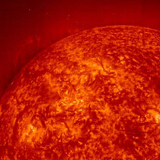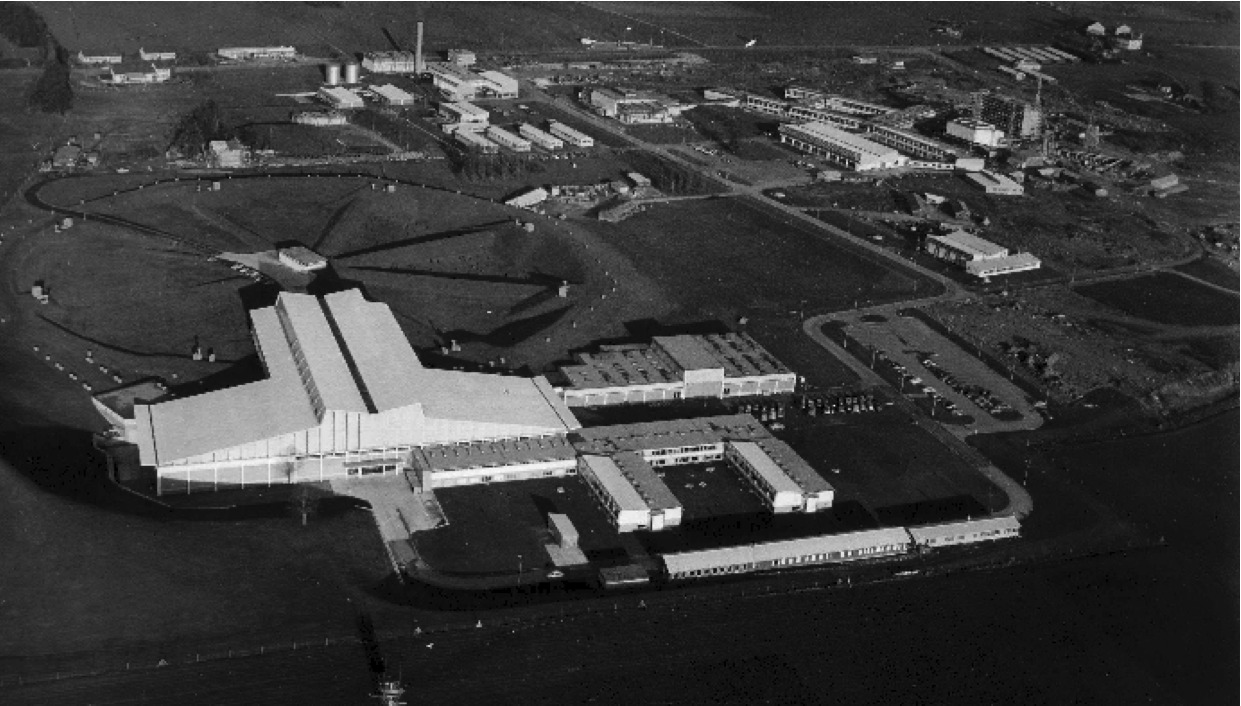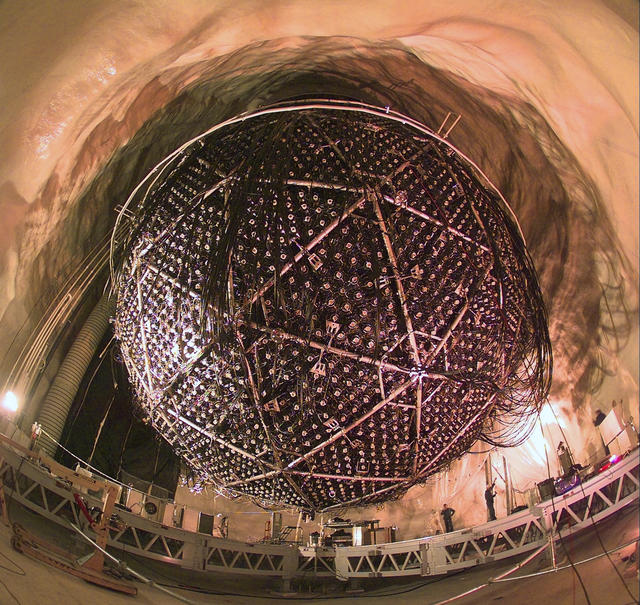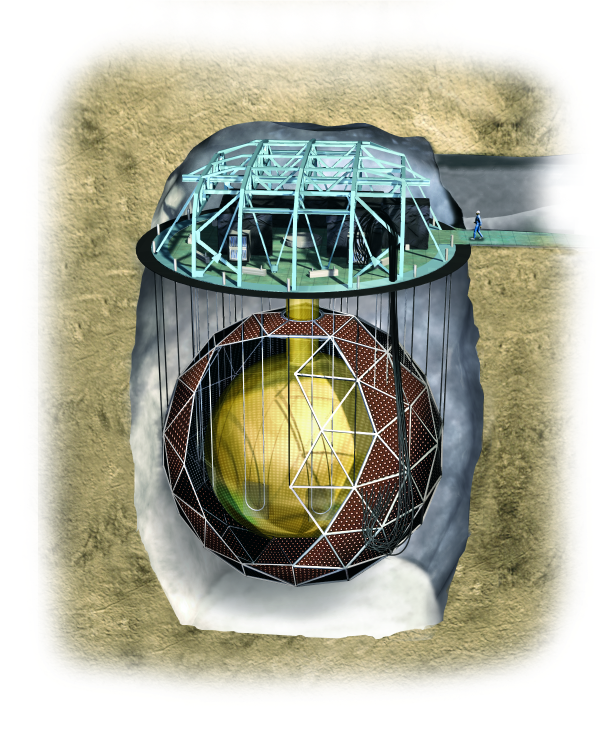
Neutrinos
What they are?

Neutrinos are the second most abundant particle in the Universe, after photons. They are constantly being produced in nuclear reactions that happen inside stars. On Earth, some radioactive materials also produce neutrinos. Neutrinos practically do not interact with matter and, for this reason, they are extremely difficult to detect. They can easily cross the Earth and stars without being disturbed, bringing important information about the Universe.
In certain radioactive atoms, a neutron transforms spontaneously into a proton and an electron. When scientists studied these reactions, they were intrigued because the sum of the final atom and electron's energies didn't correspond to the initial atom's energy. Since energy cannot be lost, a physicist called Wolfgang Pauli proposed, in 1930, that a third particle is formed with neutral charge which could not be seen and carried part of the energy: the neutrino. It was a “desperate remedy” to explain the results, which came to be proved right 26 years later.
The mystery of the missing neutrinos
The Sun, like other stars, produces energy in its core, converting hydrogen atoms into heavier helium atoms. These reaction produce neutrinos and a large amount of energy, that reaches the surface of the Sun only thousands of years later and then the Earth in the form of light. When, in 1968, the first experiments were carried out to count neutrinos coming from the Sun, the neutrino count was only a third of the expected value! This meant that either we knew less about the Sun than we thought, or we knew very little about the behaviour of neutrinos. There was yet another hypothesis, was the Sun dying?
This mystery was only solved in 2002. After all, the Sun is well and emits the expected number of neutrinos. Simply, neutrinos don't behave as we thought.
There are three types or flavours of neutrinos: the electron neutrino, the muon neutrino and the tau neutrino. The Sun produces only electron neutrinos. But neutrinos that come from the Sun switch between the three flavours while they travel and some reach the Earth as muon and tau neutrinos- much more difficult to detect. This explains the missing neutrinos. The same phenomenon has also been observed in neutrinos produced by the collision of cosmic rays with the Earth's atmosphere. The discovery of neutrino oscillations earned Takaaki Kajita and Arthur B. McDonald the Nobel prize in 2015, respectively in the Super-Kamiokande and SNO experiments.
Usually, experimental particle physics work involves big international teams. A discovery is rarely a single person's. That is why the Breakthrough Prize in Fundamental Physics in 2016 was awarded to the 1377 researchers from the five experiments that resulted in the discovery of neutrino oscillations, of which four LIP researchers.
Challenges for the future
The Standard Model, the most comprehensive particle physics theory, assumes that neutrinos are massless and travel at the speed of light, like photons. The discovery of neutrino oscillations indirectly proves that they do have mass and that the Model is incomplete.
The electron neutrino is estimated to be at least a million times lighter than the electron, but we don't know its exact mass yet. This presents a new challenge for researchers and is important to know the total mass of the Universe.
Researchers suspect the neutrino to have another bizarre behaviour. Like all particles, the neutrino has a corresponding antiparticle- the anti-neutrino. However, as both are electrically neutral, it is possible that they are the same particle. If this is true, the neutrino may help us to explain why there is more matter than antimatter in the Universe. The SNO observatory is currently transforming into SNO+, an experiment that will attempt to answer this question.
LIP on neutrinos experiments
SNO+
To know more
www.sno.phy.queensu.ca/sno/neutrino



